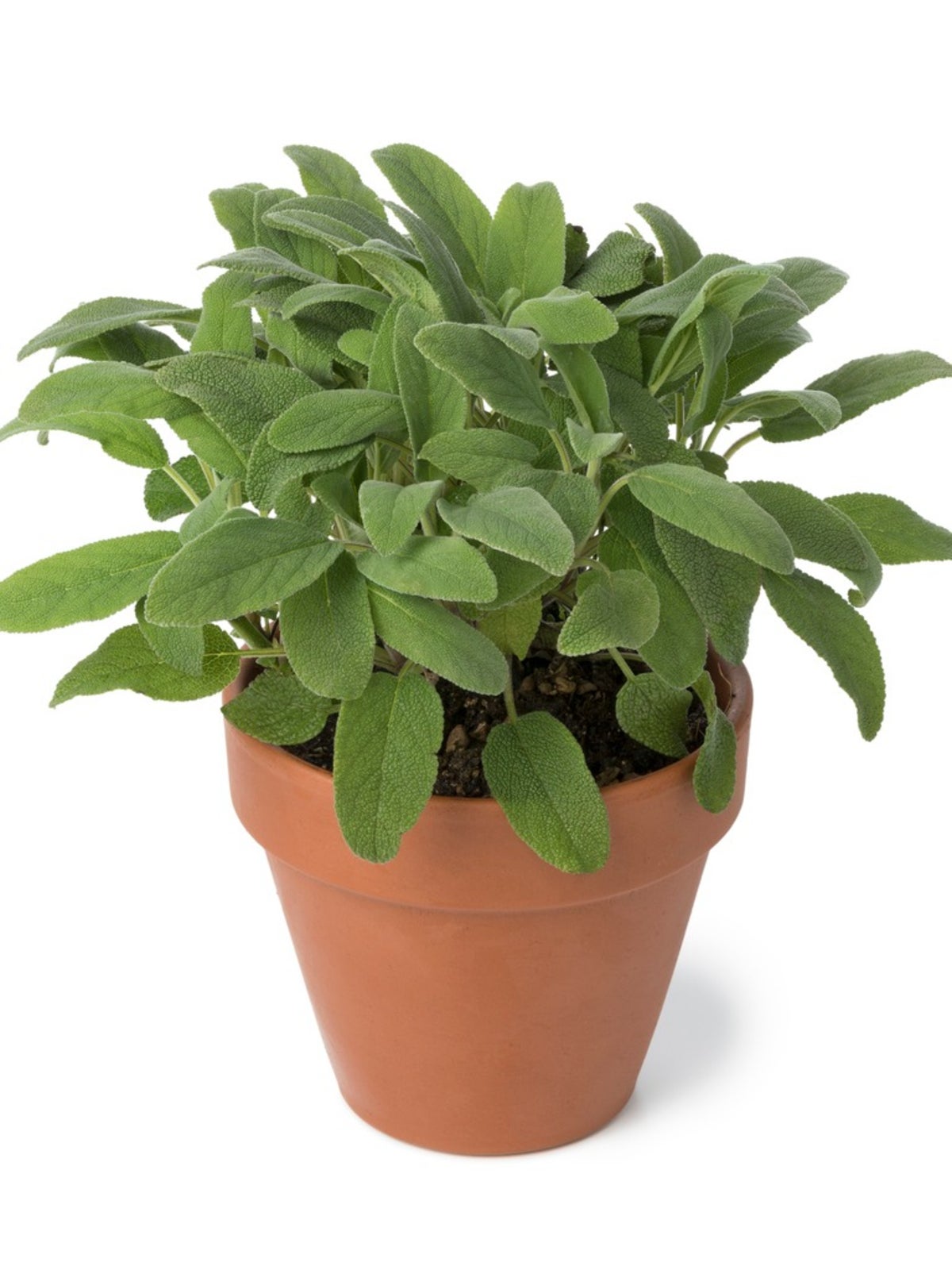Care Of Potted Sage Herbs - How To Grow Sage Plant Indoors


Sage (Salvia officinalis) is commonly used in poultry dishes and stuffing, especially during the winter holidays. Those living in cold climates may think dried sage is the only option. Perhaps you've wondered, "Can sage be grown indoors?" The answer is yes, growing sage indoors during winter months is possible. Proper care of potted sage herbs indoors provides ample leaves of this distinct herb to use fresh in holiday meals.
How to Grow Sage Plant Indoors
Learning how to grow sage plant indoors is not difficult when you understand that lots of light is necessary for successfully growing sage indoors. A sunny window with several hours of sunlight is a good start whenever you are growing sage in containers. Likely though, the sunny window will not give potted sage plants enough light to flourish abundantly. Therefore, supplemental lighting can improve the situation and is often necessary for the care of potted sage herbs. Sage needs six to eight hours of full sun daily. If your sunny window does not provide this much daily sun, use fluorescent lighting when growing sage indoors. A double fluorescent tube mounted under a countertop, without cabinets underneath, can provide the perfect spot for sage in containers. For every hour of sunlight required, give growing sage indoors two hours under the light. Place the potted herb at least 5 inches (13 cm.) from the light, but no further away than 15 inches (38 cm.). If artificial light alone is used when growing sage in containers, give it 14 to 16 hours daily. Successfully learning how to grow sage plant indoors will include using the right soil too. Sage, like most herbs, does not require a rich and fertile soil, but the potting medium must provide good drainage. Clay pots assist in drainage.
Care of Potted Sage Herbs
As part of your care of potted sage herbs, you will need to keep the plants in a warm area, away from drafts, in temperatures around 70 degrees F. (21 C.). Provide humidity when growing sage indoors, with a nearby pebble tray or humidifier. Including other herbs in containers nearby will also help. Water as needed, letting the top inch (2.5 cm.) of soil dry out between waterings. When using fresh herbs, use two to three times more than when using herbs that are dried and harvest the herbs often to encourage growth. Now that the question "Can sage be grown indoors" has been answered, give it a try for use in Thanksgiving and Christmas meals.
Sign up for the Gardening Know How newsletter today and receive a free copy of our e-book "How to Grow Delicious Tomatoes".

Becca Badgett was a regular contributor to Gardening Know How for ten years. Co-author of the book How to Grow an EMERGENCY Garden, Becca specializes in succulent and cactus gardening.